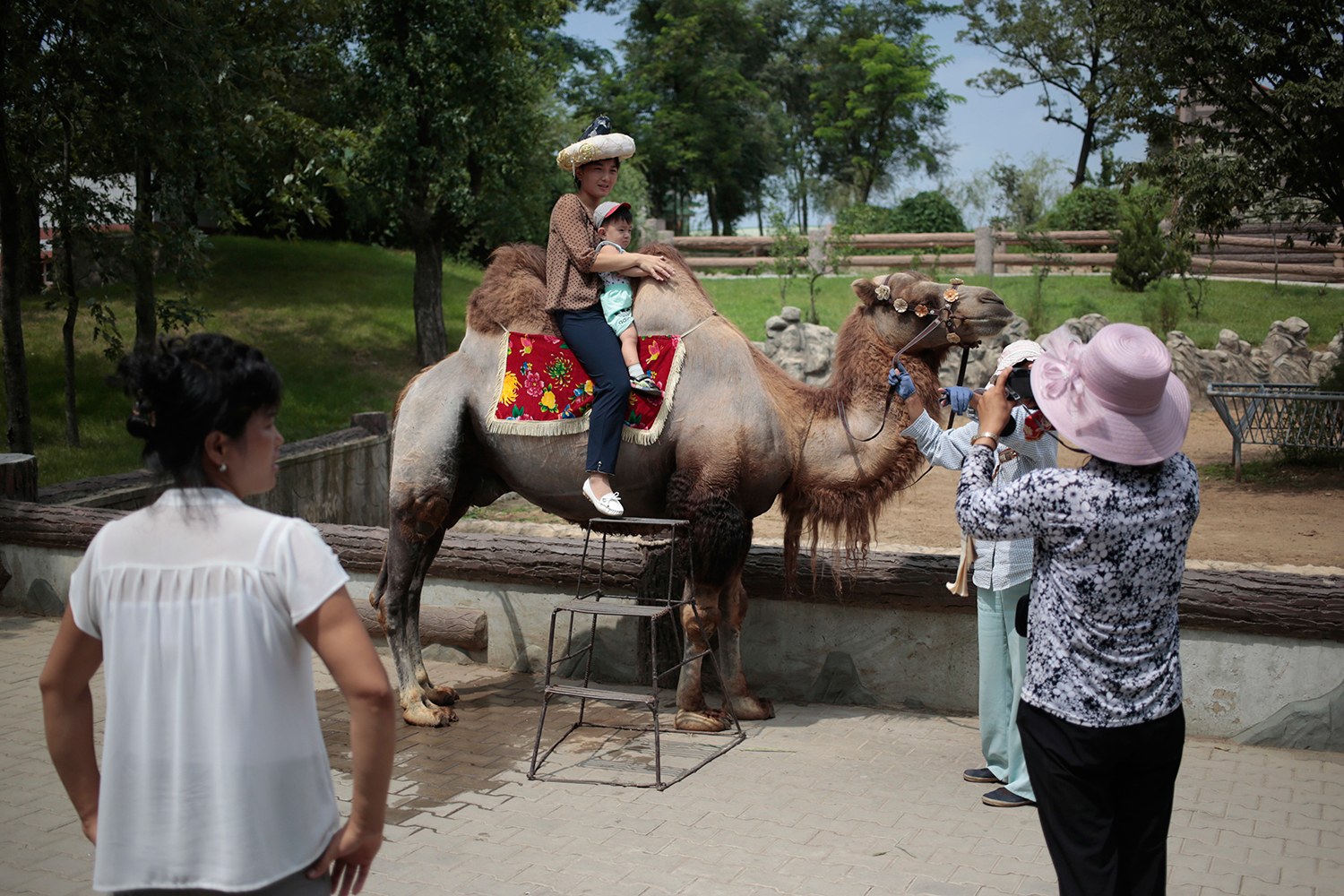500 elephants relocated in Malawi

Half a dozen African elephants lay strewn on a riverside plain in Malawi, immobilized by darts fired from a helicopter in a massive project to move 500 elephants, by truck and crane, to a sanctuary for the threatened species.
As development squeezes Africa's wildlife areas, this kind of man-made animal migration is increasingly seen as a conservation strategy in Malawi, one of the continent's most densely populated countries, and beyond.
Conservationists flipped the prostrate elephants' large ears over their eyes to block out light, and propped open the tips of their trunks with twigs to ensure unimpeded breathing. Then the multi-ton elephants, hanging upside down from ankle straps, were loaded by crane onto trucks for a road trip of about 185 miles (300 kilometers) to a safer, more spacious area.
African elephants are in particular peril from human encroachment, while poachers have slaughtered them in the tens of thousands to meet demand for ivory, mostly in Asia.
The Malawi elephant project differs from other wildlife relocations because of its large scale.
"This is very much the way that we'll have to manage things in the future," said Craig Reid, manager of Malawi's Liwonde National Park, which is run by African Parks, a non-profit group based in Johannesburg. Reid described Liwonde as "an ecological island in a sea of humanity."
African Parks is relocating hundreds of what it calls "surplus" elephants from Liwonde and Majete, another park, to Nkhotakota, a third reserve where poachers have virtually wiped out the elephant population.
African Parks, which manages all three Malawian reserves, is moving the 500 elephants this month and next, and again next year when vehicles can maneuver on the rugged terrain during southern Africa's dry winter. The Dutch PostCode Lottery and the Washington-based Wyss Foundation are key funders of the $1.6 million relocation.
An Associated Press team witnessed a day of catching elephants in Liwonde. Dr. Andre Uys, a wildlife veterinarian, rode in a helicopter that flushed elephant families from woods onto a floodplain, where he darted them in their hindquarters. Then capture teams in vehicles raced across the rutted earth toward the prone elephants' dark silhouettes.
The immediate priority was to check the health of the elephants before they were hoisted, trunks dangling, onto flatbed trucks. Monitoring included the intimate act of placing a hand over an elephant's trunk to feel the hot blast of exhaled air every few seconds.
Teams rounded up 24 elephants, including a gargantuan bull, in a day's haul that they described as a record. In one case, an immobilized calf struggled to breathe, and conservationists funneled oxygen up a tube in its trunk and measured vital signs. Uys speculated that the calf had river water in its sinuses.
"Those little guys actually can't walk along the bottom, they have to swim across the channels when we push them out into ground where we can catch them," he said. "In that process, with all the splashing from the mothers and everything, they get a lot of water up the nasal cavity."
The elephants were revived with injections in "wake-up" crates, and cattle prods were used to maneuver the animals onto vehicles bound for their new home.
There is some risk and stress in drugging and moving the animals, though South African conservationists and the commercial wildlife industry have refined and shortened the process over the years. Many animals can adapt to a new habitat if it is roughly the same as the old one.
The Malawi relocation is "a win-win for elephants and people" and an example of wildlife management that "will likely become the new norm in many places in Africa," said Bas Huijbregts, African species expert for the WWF conservation group.
While disease transfer is a concern, species restocking in Mozambique's Gorongosa National Park and South Africa's Addo Elephant National Park has been successful, said George Wittemyer, an African elephant expert and associate professor at Colorado State University.
"I see it as something that's here to stay, for better or worse," Wittemyer said.
African Parks hopes elephants in Malawi can eventually serve as a reservoir to restore other African elephant populations. One estimate says Africa has fewer than 500,000 elephants, down from several million a century ago.
A South Africa-based company, Conservation Solutions, is contributing to the Malawi relocation project. Its leader, Kester Vickery, said the key to successful relocations of what he called a "higher-thinking kind of animal" is to keep tightly knit elephant families together.
Unlike many other species, Vickery said, the first thing that a darted mother elephant does on recovering is look for her calf.
Text from the AP news story, 500 elephants find new home in massive African relocation, by Christopher Torchia.
Follow AP photographers on Twitter: http://twitter.com/AP/lists/ap-photographers
Spotlight is the blog of AP Images, the world’s largest collection of historical and contemporary photos. AP Images provides instant access to AP’s iconic photos and adds new content every minute of every day from every corner of the world, making it an essential source of photos and graphics for professional image buyers and commercial customers. Whether your needs are for editorial, commercial, or personal use, AP Images has the content and the expert sales team to fulfill your image requirements. Visit apimages.com to learn more.
Written content on this site is not created by the editorial department of AP, unless otherwise noted.
AP Images on Twitter | AP Images on Facebook | AP Images on Instagram


















